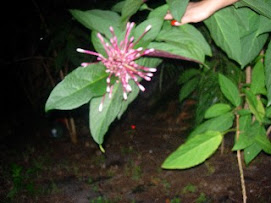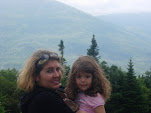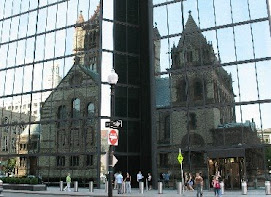Development Project PlanI. Audience: This program is designed for beginning second through ending fourth grade students, enrolled in exceptional education programs that emphasize accommodation with mental handicaps, cognitive delays and/or specific learning disabilities. The program will be designed for students functioning on a second grade level, but will accommodate non-readers as well as visually impaired. The purpose of this distance education program (DE) is to prevent skill regression, remediate and prepare students for the upcoming school year. It has been designed as a summer program that will allow the teacher and students to work together in an asynchronous manner while school is out of session.The program has been created for students from low socio-economic status (SES) families. The software used is free or has been funded by the teacher, school or school district and requires few downloads. The necessary applications can be accessed from any public computer, allowing students who do not have a computer at home to still participate. It was designed in this fashion to ensure the participation of all students including the 70% of students in the current class enrollment who are free or reduced lunch (indicating low SES).Students participating in this program have already received training in how to use each of the applications here-in defined. Students will have prior knowledge of Microsoft Office applications: Word, Power Point, Publisher as well as being versed in Internet resourcing. The students participating in this program will have spent a minimum of one hour weekly in the school’s computer lab, receiving hands on tutorial on each application. They will have spent approximately 50 hours of class time familiarizing themselves with these programs; receiving one-on-one assistance or in small groups at in-class computers. All projects and assignments will appeal to the students learning styles because, with this being an ESE classroom, all students have shown better success with lessons that are kinesthetic in nature. This application appeals to all learning styles because it incorporates all the modalities associated with learning. Students are able to touch, hear and see all levels of the project.This project is being developed for the students belonging to Walsingham Elementary School in the self contained Independent Varying Exceptionalities classes. For the pilot year, it will be open to this specific group of students at this school only, and only to the students who were in the first through fourth grades at the end of the 2007-08 school year. This program correlates with the schools mission “to provide a safe learning environment that will build students’ self-esteem as they advance to their highest individual and academic potential.” The program will support the current quality of the IVE students’ educational structures, with all projects and assignments compliant to Sunshine State Standards for both standard and special diplomas. Consent will be sought by the school administration as well as county school district approval.II. Content: This will be a six week, distance education, cross curricular program, focused on the Social Studies with the infusion of Language Arts and Math. It will be taught with the support of Music and Technology.Using the given song, with lyrics of historical significance, Billy Joel’s “We Didn’t Start the Fire”:In summary, this distance education unit, entitled “Fire Starter” will break down and define the people, places and events listed within the Billy Joel song. Students will be answering the essential question...How was history made in your lifetime? The unit question will ponder: What impact did our generation have on world history? Content questions will include:Who are these people?What are these events?Why are these things significant to history?Collaboration: The unit plan will include a total of 3 50 minute asynchronous lessons. It will also include 2 15-20 minute mini lessons, per project, in live chat format (essential one mini lesson each week).The standards and benchmarks are:Social Studies: SS.A.1.3.1 The student extends and refines understanding that historical events are subject to different interpretations (for example, patterns, chronology, sequencing including cause and effect and the identification of historical periods). GLE #2. The student understands chronology (for example, knows how to construct and label a timeline of events). SS.A.2.3.2: The student knows how major historical developments have had an impact on the development of civilizations. GLE #1. The student knows ways major historical developments have influenced selected groups over time (for example, the rise and spread of the Muslim religion).Language Arts: Standard 2: The student constructs meaning from a wide range of texts. LA.A.2.3.1: The student determines the main idea or essential message in a text and identifies relevant details and facts and patterns of organization. GLE #4. Analyzes ways writers organize and present ideas (for example, through chronology, comparison-contrast, and cause-effect).III. Goals and ObjectivesThe student objectives and learning outcomes will be:1. The students to identify and explain people, places and events listed within the lyrics of a given song with 80% accuracy (Due by week 2’s end).2. The students will create and present a Power Point Presentation based on the lyrics of the song, presenting lyrics that have historical significance within the timeline of their own lives (Due by week 4’s end).3. Students will create a newsletter or brochure demonstrating comprehension of the historical relevance of the lyrics in the given song (Due by week 6’s end).4. The students will subdivide into groups of 4 to 6 people and will create a final report from afore listed options as their final project. This final project will not be due until the end of the second week of the upcoming school year. (Thus allowing students face to face interaction and live small groups, with teacher assistance to complete the final assignment.)a. Students may create a website or wiki for a written report with each member of the group editing or adding to the product.b. They may present an oral report using applications such as Voice Thread, with each member of the group sharing/contributing to the conference.c. They may present a video presentation (using skit, role play or reenactment) as a small group.The Student Goal for this project will be that upon completion of this DE program, I (the student) will be able to successfully explain how history has been made during my lifetime. The Teacher Goal is to “fan the fire” (Snider, 2008) of knowledge. The project is designed to decrease the chances of regression and allow students a structured opportunity to learn new forms of expression, enhance the skills they’ve previously learned and to introduce new skills that will be necessary for the year ahead.The timeline will be take place over a six week period. All grades will be with held until the end of the six week period, allowing the students time to modify their work and make changes according to newly gained knowledge or teacher feedback. The project will be broken down into 3 stages with a final project that will be due two weeks after the start of the regular school year. Grades will be administered as one total grade, compiled from three categories (each project being one category) and will be their first marked grade of the initial grading period when traditional classes resume. The final project will be the second grade awarded for the initial grading period upon returning to school. Scoring will be based on rubrics explained in the teacher PowerPoint (viewed at the end of the previous school year and available online at the student’s discretion).IV. Activities: The lesson will be introduced by showing the music video http://www.youtube.com/watch?v=pKu2QaytmrM . Enthusiasm will be peaked by presenting the University of Chicago student’s slideshow http://home.uchicago.edu/%7Eyli5/Flash/Fire.html. Three scheduled slideshow presentations will take place as part of asynchronous conferences. The slideshows will be created using Power Point and will be discussed by adding individual comments to a Voice Thread account. Assignments will be submitted by emailing a URL address or Web link to the teacher within the allotted time. www.slideshare.net/AESnider/presentation3-288642/, www.slideshare.net/AESnider/presentation2-288640/, and www.slideshare.net/AESnider/assignment-3-280474/Other planned activities include:1. Supplemental learning will be provided through computer based lessons that are chosen because of their ability to reaffirm lessons taught during the previous school year.2. Computer based lessons that will introduce objectives from the upcoming school year. Sources include Starfall, TumbleBooks, FCAT Explorer, and Riverdeep: Destination Success.3. Students will attend a virtual field trip through http://www.kidscosmos.org/welcome.html.4. Students will practice their math skills by working with manipulatives online through http://nlvm.usu.edu/en/nav/vlibrary.html.5. Links will be provided to other practice sources through http://del.icio.us/aesnider and the schools resource page, http://destiny.pinellas.k12.fl.us/common/welcome.jsp?site=176.V. Materials and Media: This Distance Education Program will be possible through the assistance of printed materials, internet resources, virtual applications and various supplies.Printed Materials: Students may use their textbooks, encyclopedias, archived newspapers, and archived magazines.Internet resources: Student chosen search engines (example Google, MSN, or Yahoo). Inspirational slideshow used as introduction to lesson, courtesy of http://home.uchicago.edu/%7Eyli5/Flash/Fire.html. The actual video filmed and performed by Billy Joel of the song “We Didn’t Start the Fire” will be shown thanks to YouTube. Test preparation, supplemental and remediating lessons and additional practice will be given through links to Starfall, TumbleBooks, FCAT Explorer, and Riverdeep: Destination Success.Virtual applications: Students will take a virtual tour of the National Library of Congress, courtesy of www.loc.gov. Other Virtual applications will be provided by http://www.kidscosmos.org/welcome.html.Technology – hardware: Students may use computers, digital cameras, the internet, laser disk players, printers, projection systems, scanners, television and VCR or DVD, and/or video cameras during the duration of this program.Technology – software: In completion of this program, students may use various forms of software to assist in: desktop publishing, email, image processing, web page development and word processing, as well as for multimedia applications, as encyclopedias on CD-ROM and in the form of internet web browsers,.VI. Assessment: All grading will be withheld until the end of the six week program. Teacher feedback will be provided through duration of the summer session. Detailed feedback and suggestions will be made at the end of each two week interval and will be specific to the section of the project submitted. The final project will be graded upon the completion of the second week back to school in the fall, allowing students face-to-face interaction for the final project. Grades will be given based on specific criteria and according to the rubrics listed below.






